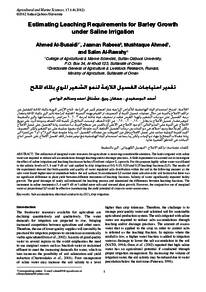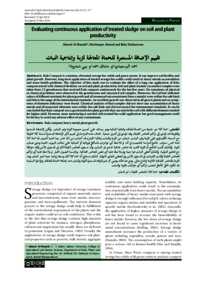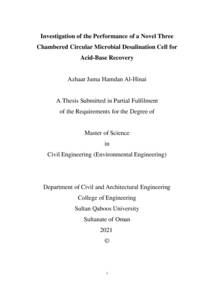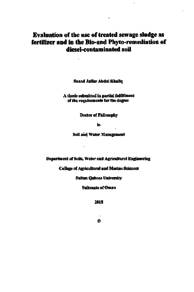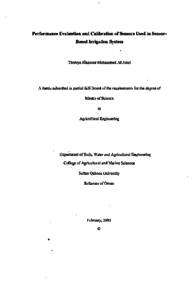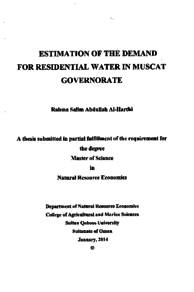وثيقة
Estimating Leaching Requirements for Barley Growth under Saline Irrigation.
المساهمون
الناشر
جامعة السلطان قابوس. كلية العلوم الزراعية والبحرية
ميلادي
2012
اللغة
الأنجليزية
الموضوع
الملخص الإنجليزي
The utilization of marginal water resources for agriculture is receiving considerable attention. The lands irrigated with saline water are required to reduce salt accumulations through leaching and/or drainage practices. A field experiment was carried out to investigate the effect of saline irrigation and leaching fraction on barley (Hordeum vulgare L.) growth. For this purpose highly saline water was diluted to the salinity levels of 3, 6 and 9 dS m-1 and applied by drip irrigation at 0.0, 0.15, 0.20 and 0.25 leaching fractions (LF). The results of the experiment showed that both quantity and quality of water regulated salts distribution within the soil in the following manner: a) the salts were found higher near or immediate below the soil surface; b) an enhanced LF carried more salts down the soil horizon but there was no significant difference in plant yield between different treatments of leaching fractions. Salinity of water significantly impaired barley growth. The good drainage of sandy soil enhanced the leaching process and minimized the differences between leaching fractions. The increment in saline treatments (3, 6 and 9 dS m-1) added more salts and stressed plant growth. However, the conjunctive use of marginal water at proportional LF could be effective in enhancing the yield potential of crops in water-scarce areas.
المجموعة
ISSN
2410-1079
URL المصدر
الملخص العربي
أصبح استخدام المياه الهامشية للأغراض الزراعية مثار اهتمام كبير في الزراعة. تحتاج الأراض المروية بالمياه المالحة للتقليل من تراكم الأملاح بالتربة من خلال عمليات غسيل التربة أو التصريف. تم القيام بهذه التجربة الحقلية لدراسة تأثير الري بالمياه المالحة ومقدار درجة الغسيل على نمو نبات الشعير. ولهذا الغرض فلقد تم تخفيف مياه مالحة لدرجة 3، 6، 9 دس/متر ، واستخدامها بالري بالتنقيط لتوفير مقدار غسيل الأملاح بما يعادل 0، 0.15، 0.20، 0.25 من الماء المضاف. أوضحت النتائج بأن كمية الماء المضاف وجودته أثرت على توزيع الأملاح في التربة على النحو التالي: أ) وجود الأملاح في الأعلى أو بالقرب من سطح التربة، ب) ساعدت زيادة الغسيل على غسل الأملاح ولكن لم يلاحظ وجود اختلاف في نمو النبات بين درجات الغسيل المختلفة. أثرت ملوحة المياه بصورة سلبية على نمو الشعير ولكن التصريف الجيد للتربة الرملية ساعد على غسل الأملاح وقلل من الفروقات بين معدلات الغسيل. أدت زيادة ملوحة مياه الري ( 3 و 6و 9 دس/متر) الى زيادة معدلات التملح وإجهاد نمو النبات. ولكن ربما يساعد استخدام المياه الهامشية مع توفير مقدار كاف لغسل الأملاح على تحسين إنتاج النباتات في المناطق الفقيرة مائيا.
قالب العنصر
مقالات الدوريات

